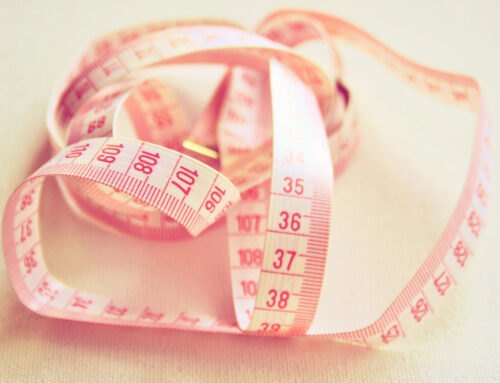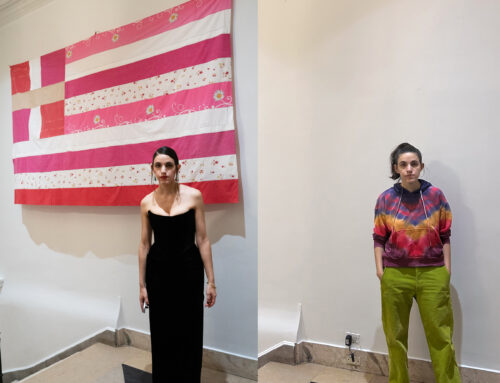When I first got my period in middle school, my mother placed a small foam pad encased in pink plastic in my palm. She folded my stiff fingers over it and ushered me towards the bathroom—taking the hallway to avoid my father and grandparents—where she proceeded to teach me how to peel the sticky layer away from pads, treat my body with caution, and associate blood with pain. She could sense my discomfort, but also my pride in passing a landmark of adolescence. After we finished cleaning up, she left me with some instructions: I couldn’t go into the temple area we had in our house, mention my period to members of our family, and had to cover the pads so that no one else saw them.
I, like many menstruators, was taught that my body was a crime—one that needed to be stifled down with shame so bare that it lived on within me. My period was not a mark of youthhood bleeding into maturity, but rather a mark of impurity. So, I learned to follow directions—to carefully hold questions, to shove my pads towards the bottom of my backpack where they remained invisible, to shake my head when my parents ushered me to pray, signaling “I can’t because I’m not pure today,” and to wear my body as if it were a burden a few days each month. I forgot to honor my body’s beautiful transition and instead learned to brand it the way our culture has labeled womanhood. In this case, my period was not a badge of honor; it was condemned by a culture deeply afraid of conversation and confrontation.
The sentiment that menstruation is a time when women are “impure” or “unclean” is steeped in many cultures, including my own. Menstruation—a topic that has routinely been policed and stigmatized— continues to exist with shame in our language. Moreover, many families avoid conversations surrounding menstruation altogether, preventing young adults from developing positive attitudes about their bodies, menstruation, and health. In other regions, conditions are more extreme. For example, in Nepal, women are forced into exile and are prohibited from having any human contact when menstruating. In India, menstruators are told that they cannot cook food, as they will “pollute it.”
On the other hand, in the United States, many assume that menstruation is slowly being celebrated rather than neglected—and, this is certainly true. Health educators are making it a point to frame menstruation in a positive manner in classrooms, grass-roots organizations are lobbying to ensure that period products are more affordable for individuals, and national organizations are extending their efforts internationally to assist other nations where menstruation remains heavily stigmatized. But, while the period movement is finally gaining momentum in countries like the United States, the path ahead—towards equity and recognition of menstruation—still remains steep.
A large portion of the battle to secure menstrual equity lies in the understanding that periods are a natural and biological process. And thus, similar to how toilet paper is rightfully available in public restrooms, hygiene products must also be accessible to menstruators in public spaces, such as workspaces and schools. Additionally, when we speak about menstrual equity, it’s critical to note that this term signifies “equal access to products,” which, for many menstruators, is not always a reality. Period poverty, the inability to access or afford safe and hygienic sanitary products, is especially prevalent in low-income menstruator populations, compelling individuals to resort to unhygienic measures. In fact, in most states, a luxury ‘tampon tax’ is applied to menstrual products and these products are not eligible for coverage under food stamps or SNAP benefits, leaving individuals with the choice to purchase either hygiene materials or food. Moreover, according to a State of the Period study conducted in 2019, female students reported that they would rather miss class than go to school while they were menstruating if their school does not provide hygiene products in restrooms. In response to this finding, the Boston School District made products available through a $100,000 pilot program which enabled nurses to distribute products to menstruators. And, as noted in the study, “although this is a step in the right direction, [menstrual] supplies should be more readily available, as in being provided in restrooms.”
Ensuring widespread access to menstrual products and eliminating the ‘tampon tax’ is surely vital, but not the sole aim of achieving ‘menstrual equity.’ We must recognize that menstrual equity comes from not only shifts in federal and legal policies, but likewise in culture. First, we must understand that not all menstruators identify as women. The way our society has been engineered to understand menstruation and reproductive health, including periods, assumes that a person’s gender signifies their reproductive organs. This is not the truth. We’ve already seen that the cost of period products alone can be a hurdle for individuals’ ability to attend school, go to work, and engage in public spaces. However, uniting this ‘period poverty’ with the fact that trans-individuals are more likely to live in poverty, it’s quite evident to understand how the lack of access to hygiene products presents a disproportionate burden on trans and non-binary populations.
Moreover, while some public institutions have started to offer menstrual hygiene products in restrooms, they are exclusively located in female bathrooms. Not only do male restrooms rarely have period products, but they likewise do not contain trash dispensers, leaving no place to dispose of period products. Certain public spaces, such as college universities, have taken steps to address this issue. For example, New York University now offers free menstrual products in many restrooms and offices across campus. Moreover, at Loyola University in Chicago, campus organizations have been stocking men’s restrooms on campus, along with gender-neutral bathrooms and those for women, with free products. Recognizing that the term ‘menstruation’ does not exclusively equate to ‘female’ or ‘woman,’ menstrual pad maker Always removed the female symbol for its products to “create a more inclusive understanding of reproductive health care.”
Inclusive access to products for all menstruators is necessary but is only one factor in the path to menstrual equity. Access to clean water, sanitation, health education, and cultural stigma continue to stand as barriers in achieving widespread menstrual equity. As menstruators, our bodies are electrified with power—the power to normalize what has been stigmatized, embrace what makes us fundamentally human, and advocate for challenges we face. An individual should not have to hide their tampon in their sleeve or be in a position where hygiene products are unavailable when in need. Every individual experiences their period differently, and boxing menstrual equity into conforming terms fails to address the diversity of menstruators and their experiences. We must confront and tell the whole truths about menstruation, both in the passage of legal policies and in the culture around us. Cultivating this understanding will be a step towards achieving the complex and intricate battle for menstrual equity.




